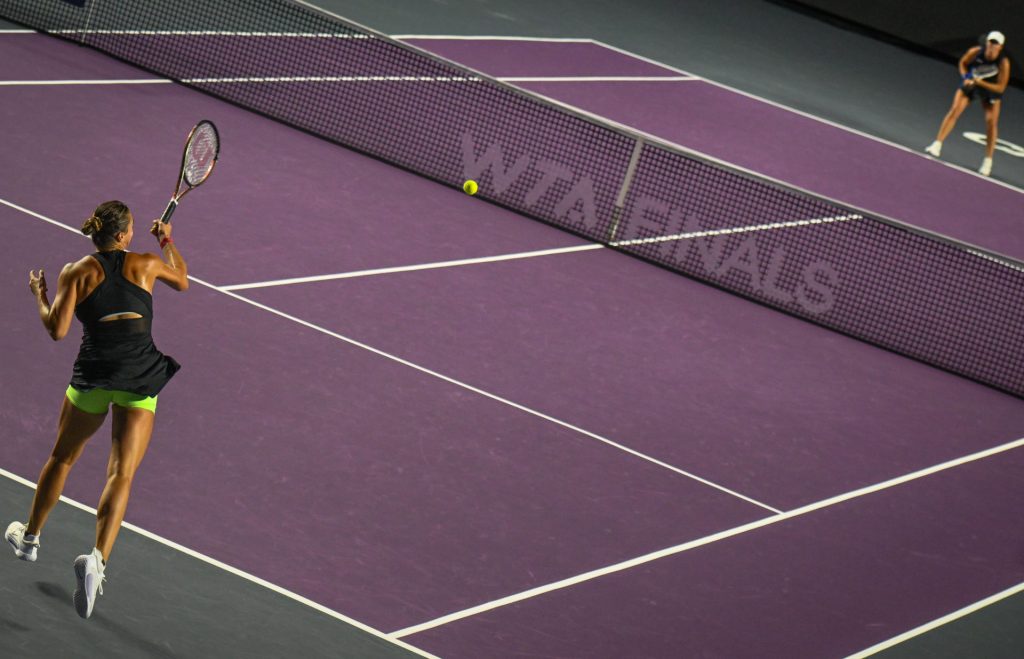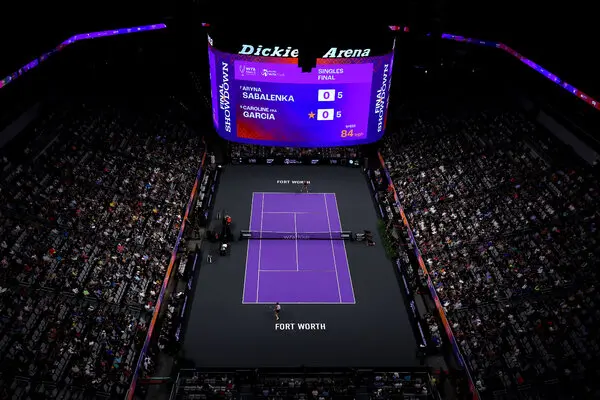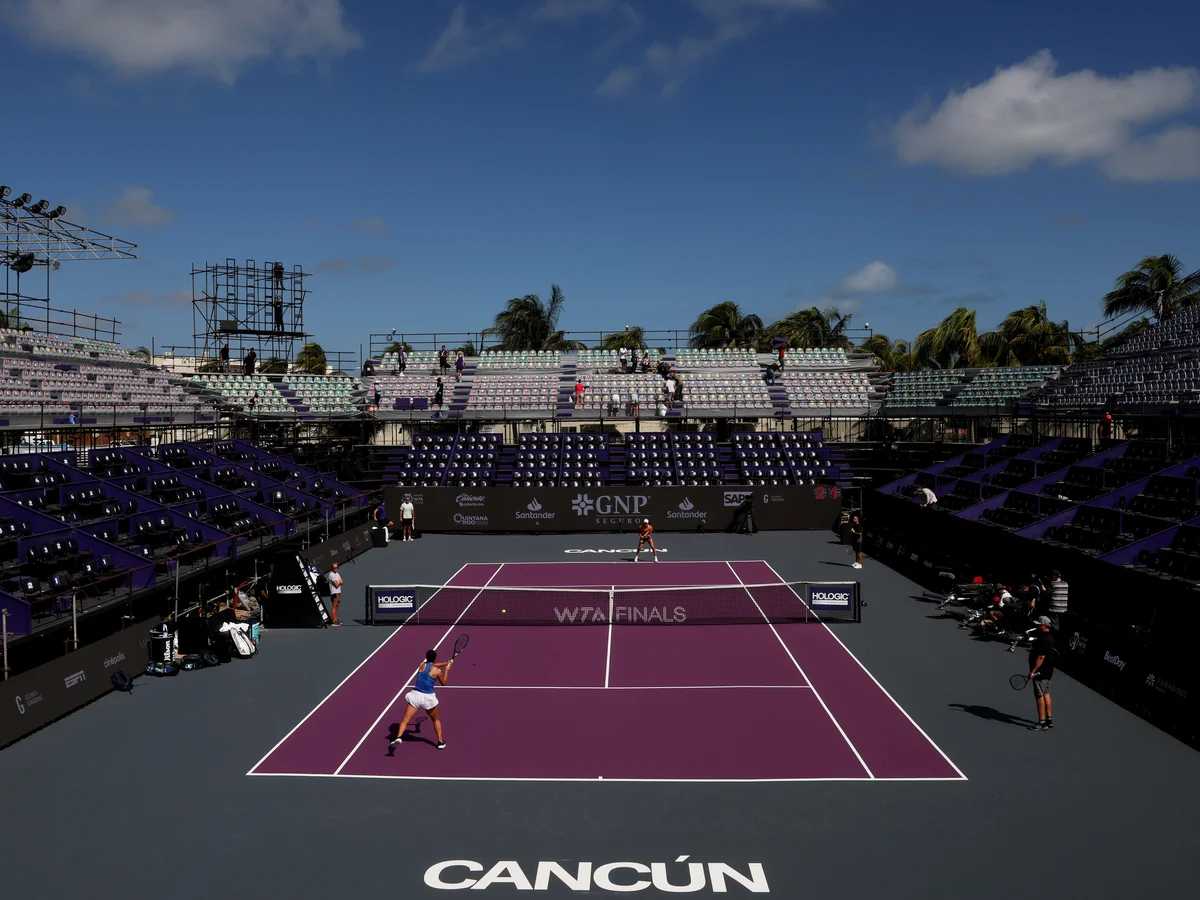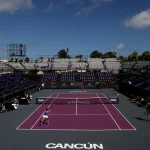The world’s eight singles and doubles players will come together in Shenzhen once again in 2025 in exhibition of tennis to compete in the WTA Finals. Suzhou Bay Arena in Shenzhen has a unique advantage—they have a custom-built hard court that possesses the acceleration properties of traditional acrylic courts, but with a modern-standard high-performance drive. Both sides of the court need to grasp the game metrics: broad surface speed, first serve percentages, returned and unreturned serves, winning return points and many more. Shifts from traditional to modern methodologies will serve as the highlight of the presentation. In this analysis, we look at the effects of surface features on serving topographies, strategies employed by the best returners, and what particular stats define a blistering pace and separate a winner from a loser in Shenzhen.
The History Of The Court Speed Progression In Shenzhen

Ever since Shenzhen hosted the WTA Finals, the surface has been set up to incentivize aggressive play from the baseline, while still enabling some degree of defensive rallies to be effective. Roughly 2–3 km/h faster than comparable indoor stadiums, ball speeds off the court are approximate and bounce heights remain consistent at 58–60 cm. These intermediate ranges tend to offer a compromise that allows players with flat, penetrating groundstrokes to take time away from defenders, while also enabling adept chip-and-charge players to find chances to turn defense into offense. Over the last three editions at Shenzhen, some changes to resin content, roller application, and other parameters have gradually reduced ball dwell time on the surface by 5–10 milliseconds to slightly favor power hitters without sidelining counterpunchers.
Serve Dynamics on Fast Hard Courts
Using a fast court increases the effectiveness of the serve and speed of serve metrics. At the 2024 WTA Finals in Shenzhen, the average first serve speed of the top 8 qualifiers was around 180 km/h, with the fastest servers Aryna Sabalenka and Karolina Pliskova reaching 195 km/h. There is also a higher percentage of unreturned serves – roughly 38 percent of all first serves were unreturned compared to a worldwide tour average of 32 percent on hard courts. There was also an increase in aces per match, averaging 7.4 compared to 6.1 on slower indoor surfaces. While speed enhances the serve, placement, spin, and disguise also matter. The dominant strategies observed in Shenzhen included wide serves on the deuce court to open up the court and flat down the middle serves in the ad court to capitalize on minor positional mistakes. Reliability also extends to second serves: players with a second serve winning percentage over 55% such as Gauff and Pegula faced significantly less breakpoints against them, highlighting the importance of dependable variety serves on a surface that favors pacing.
Counter Strategies for the Power Serve
Shenzhen’s competition level necessitates viscosity on both sides of fitness and strategy for returners. Shut down attempts, where performers with high self-confidence advance towards the court to hit return serves, often neglect the angle coverage. More proficient returners on tour, like Ons Jabeur or Iga Swiatek, make use of a split-step timing drill that is tightly timed to the millisecond, permitting them to react later than usual and control the ball once it is on the rise. Aggressive chip returns—which counter the serve using slicing backhands and then capitalizing on the lack of defensive posture—appeared to be most helpful against Shenzhen’s medium fast bounces as it allowed players to get to the net in time for finishing volleys. Last year’s Finals data shows that players who placed 25–30 percent of their returns within the box instead of deep behind the baseline converted break points 42 percent of the time whereas those who returned from a more retreated position stood at an abysmal 28 percent. The adjustment to pace involved deep heavy cross court returns along with short, snappy chipping balls aimed at the server’s feet. Such lines kept offensive servers thrown off target while achieving a greater number of return wins.
Primary Indicators of Performance: Serve Percentage and Points Won on Return
There are many differing measurable indicators to consider in evaluating performance on Shenzhen’s court. First serve percentage remains critical: failing to average at least 62 first servoes in tends to correlate with not advancing from the round-robin phase. Players that went below 58 percent did see their tournament runs end early. Just as telling is the metrric return-points-won: achieving at least 24 percent returnpoint capture for first serves and 52 percent on second serve split semifinalists from everyone else. Break-point conversion rate sharpens this picture; it was often the case that break opportunity is over 40 percent during tighter, tiebreak heavy matches in doubles. In these, serve and-volley percentages also increased as teammates drove into net off moderate returns, reinforcing the surface’s premium on precise serving and attuned teamwork. Real-time tracking of these metrics enabled fans and analysts to notice changes in game momentum turn, for example, watching a player creep from 20 percent to 26 percent in first-serve return wins was often a sign for presaged match-turning surges.
Adaptations of Players and Shifts in Strategy

Ability to prepare and adapt determines the success of Shenzhen. A number of players come a week early to split practice sessions between Palau Sant Jordi’s hard court and a local outdoor facility to fine-tune their strings. Often softer by 1–2 lbs due to moisture and humidity, the indoors also slows down ball rebound. Coaches enable bracing footwork drill techniques by having shorter stride steps combined with more pronounced lateral push-offs, stabilizing techniques used on clay-courts to drive mobility without sliding on the brisk surface. Together with data analysts, coaches tend to in-session heatmaps of shot placements which allow serves to be retargeted mid-tournament based on emerging return patterns. Nutritional approaches seek to sustain muscle elasticity given the humid atmosphere fortified with electrolytic food and cryotherapy aimed at supercharging recovery between matches. At the end of the day, there is a culmination of WTA Finals in Shenzhen which showcase the best of hard athleticism and the strategic layering of clay-season endurance requiring players to blend raw power and strike deliberation infused precision tactics.






Leave a Reply